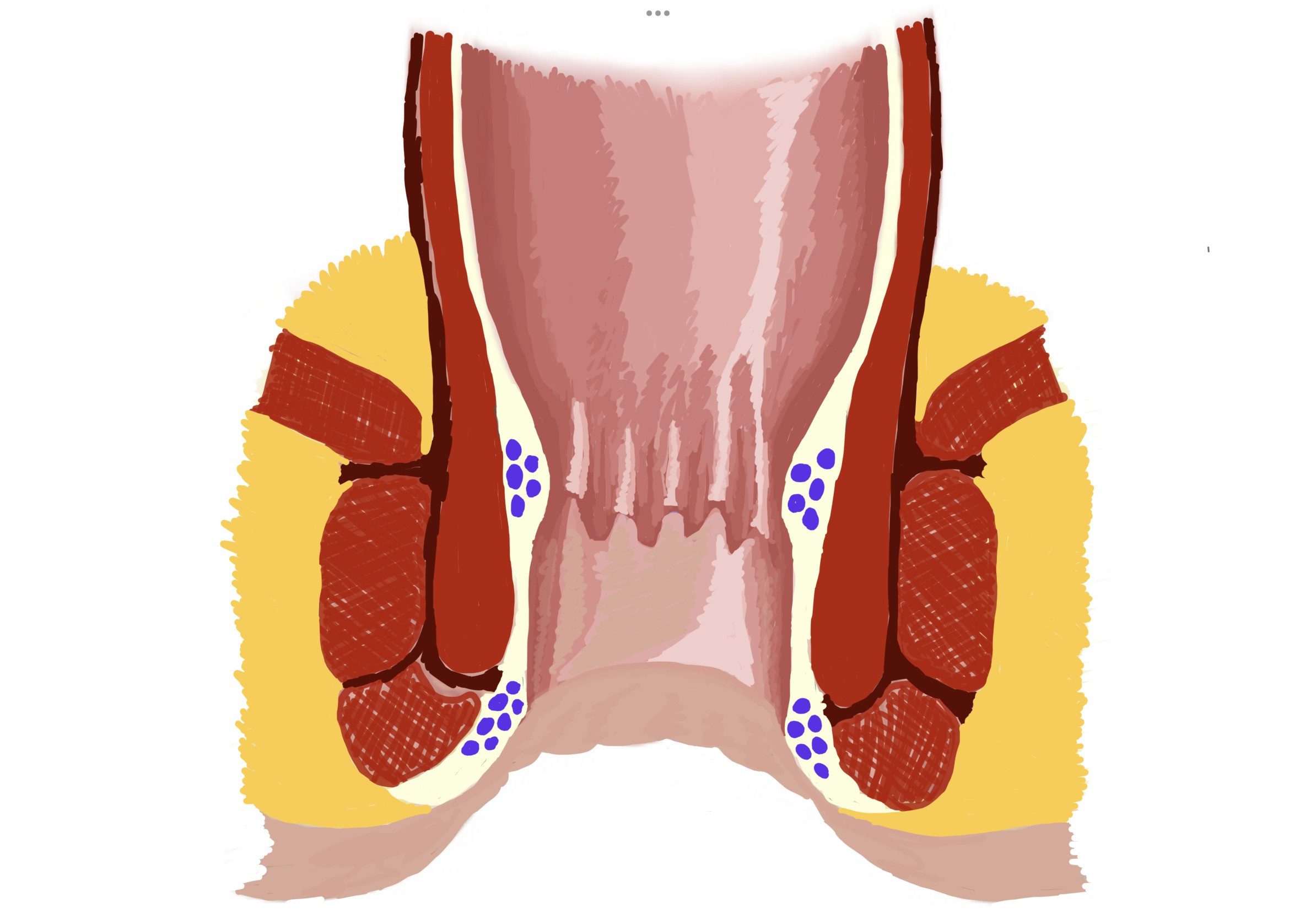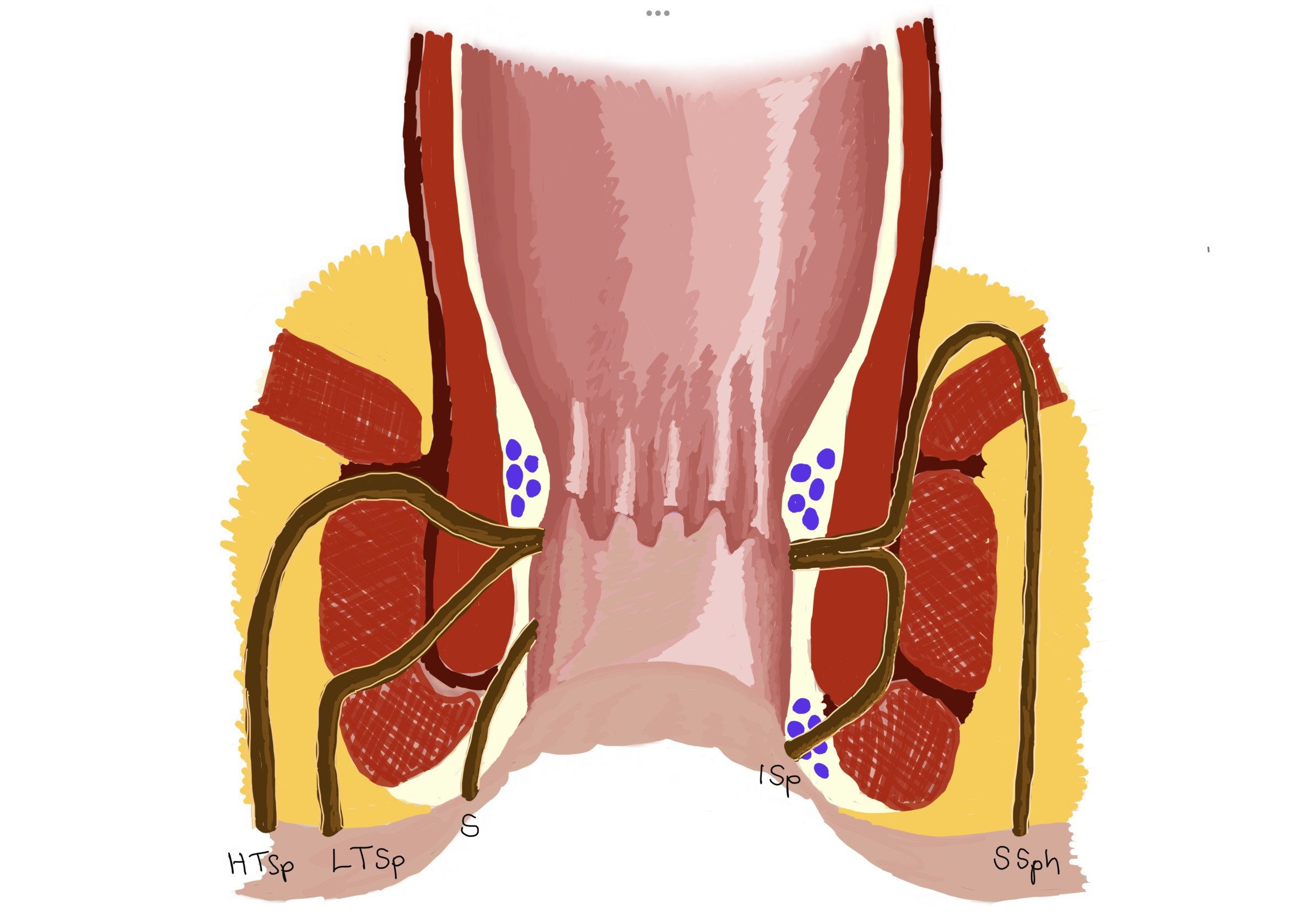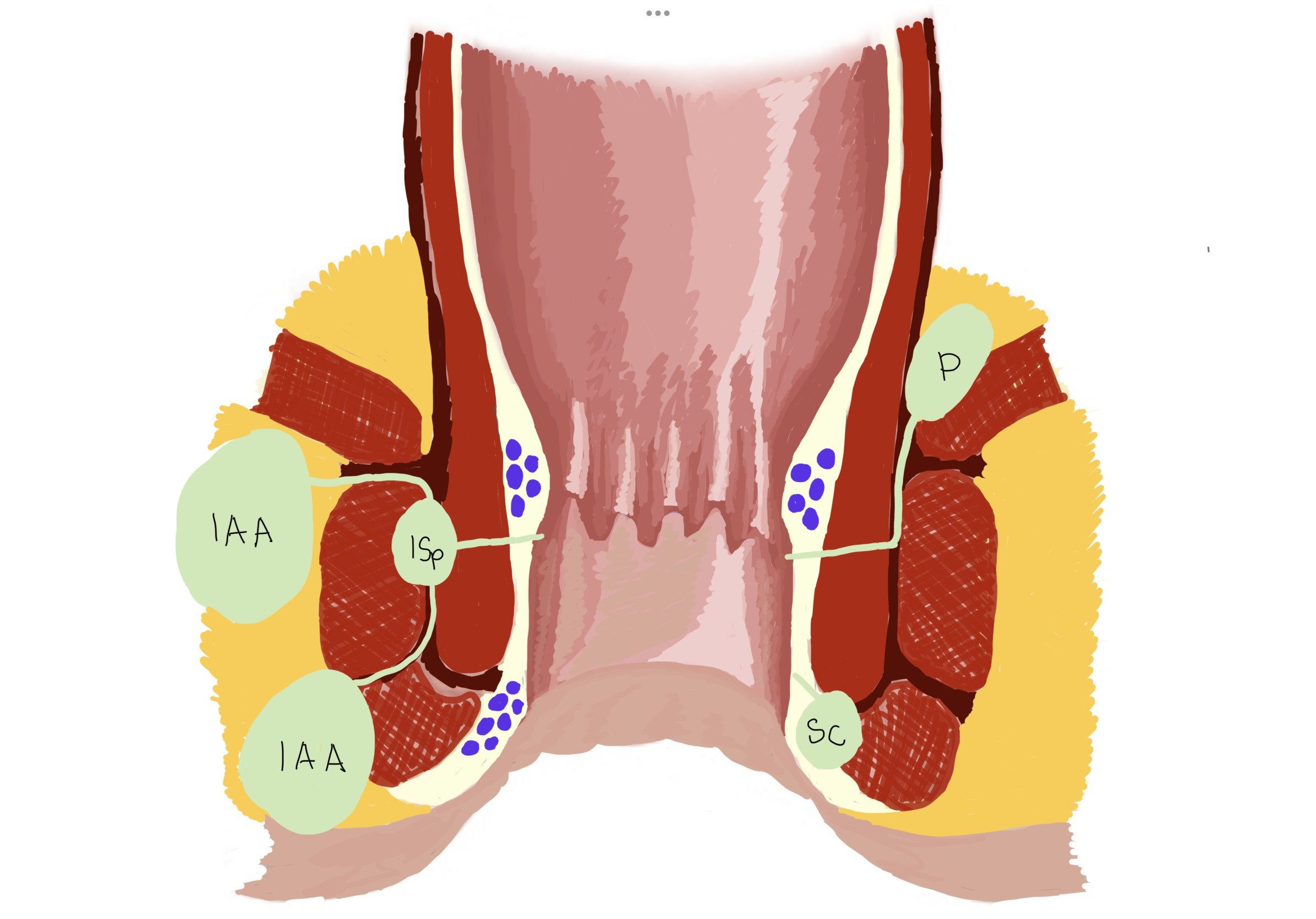Anal fistula is an abnormal connection between the inside of the anal canal and the outside skin of the bottom (the perianal/ perineal skin). This small caliber tunnel leads from the anal lumen to the skin passing through the anal wall crossing or going around the anal sphincter muscles.
Once this tunnel exists, every defecation allows a bit of stool or soiled mucus to pass through the tunnel and eventually appear in a small hole of the skin as a smelly, sometimes blood-stained discharge.
Anal fistulas (precisely fistulae from Latin) mostly originate from Anal Abscesses. And anal abscesses mostly originate from infected anal glands. When an anal abscess develops it is a rather painful, throbbing swelling in or next to the anal opening. It is either drained surgically or sometimes bursts open on the anal skin by itself. The chances are very high – around 80-90% – after an anal abscess has resolved, that an anal fistula will develop.
Anal fistulae can only be cured by surgery. Anal abscess surgery is urgent. Anal fistula surgery is not very urgent, however “sitting long” on an anal fistula can make it more complex.
What signs and symptoms one has with this problem?
Anal abscess is a very painful condition. Often the patient feels a vague lump through the skin and the skin over the abscess become reddish. However sometimes (typically with inter-sphincteric abscesses) there is only pain, no other signs or symptoms.
Anal fistulae are not painful. The acute inflammation settled. There is a chronic inflammation, which is already walled off by the immune system; this wall is the wall of the fistula tract. The only sign is a small amount of smelly, purulent (pus containing), sometimes a little blood stained fluid emptying on a small skin hole near the anal opening.
Anal abscess and anal fistula can alternate: when the skin hole heals over it turns into abscess again, with pain, then it bursts open, the pain settles and discharge starts again.


